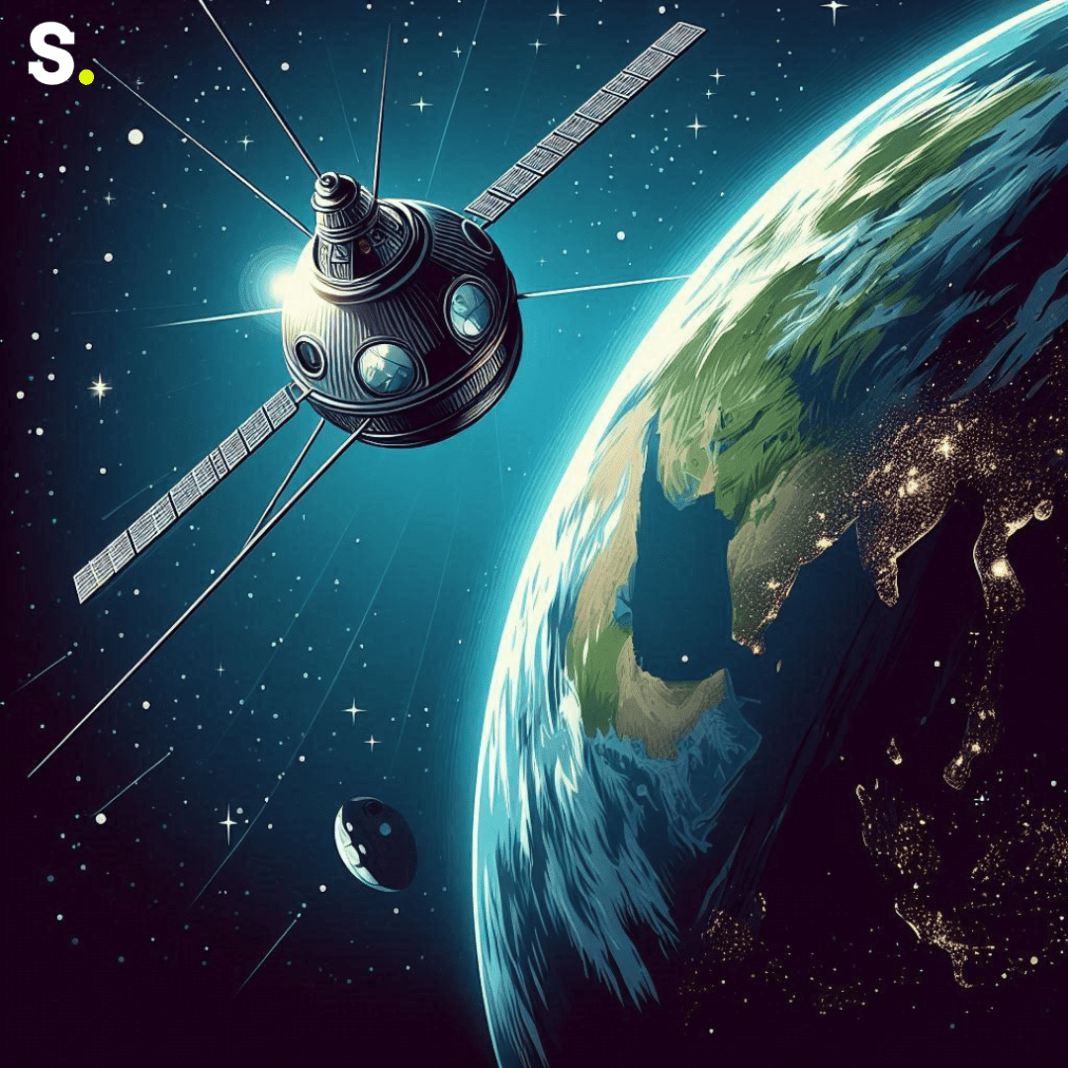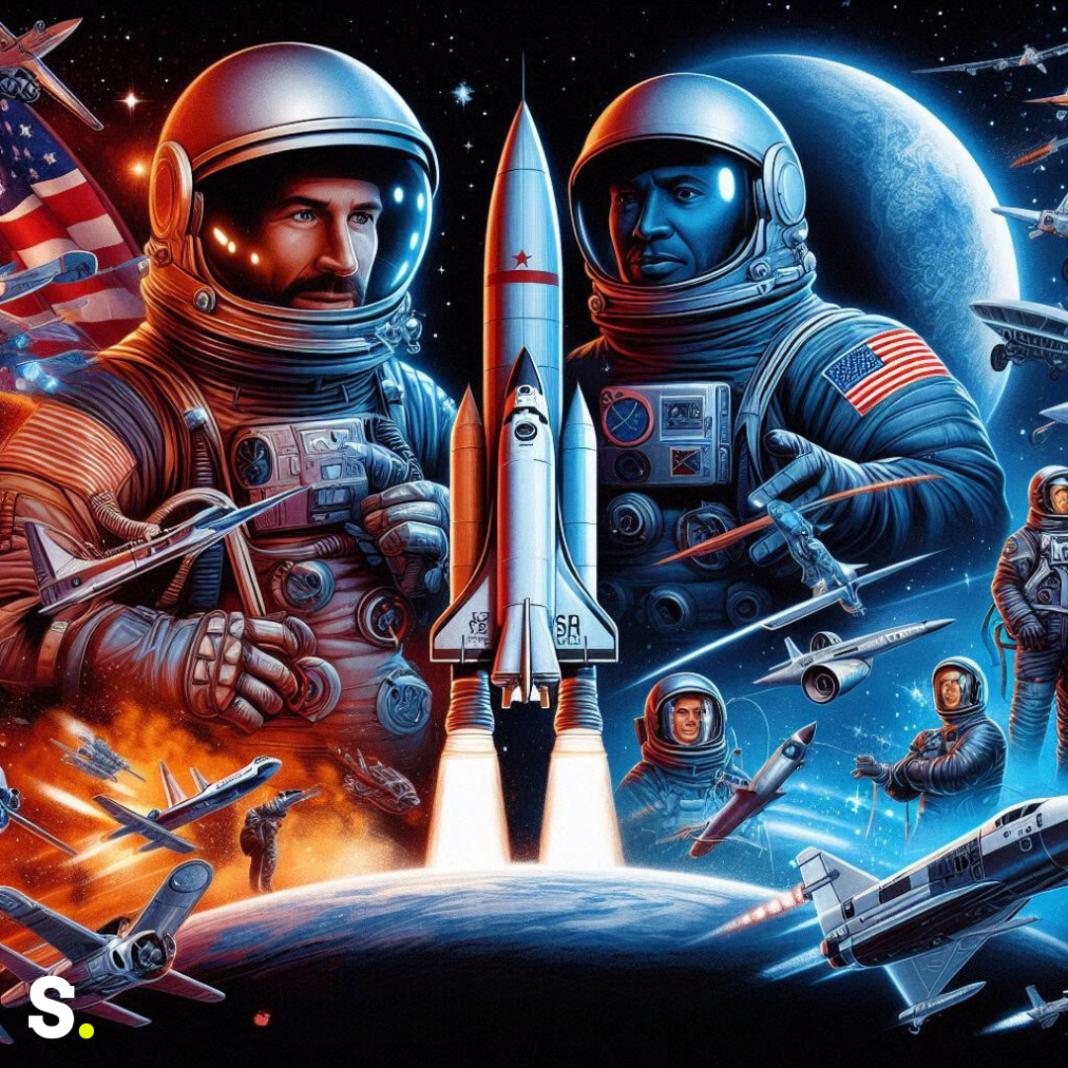Humans have always been fascinated by the stars, looking up into the night sky and dreaming of exploring space. This dream became a reality in the 20th century when rockets were developed powerful enough to overcome Earth’s gravity and reach space. Here’s the incredible story of how space exploration began and evolved over the years.
The Dawn of Space Exploration
In the 1930s and 1940s, rockets were seen as powerful weapons. Nazi Germany used long-distance rockets like the V-2 missile during World War II to attack London. These missiles traveled over 200 miles and reached speeds of more than 3,500 miles per hour. After the war, both the United States and the Soviet Union began developing their own rocket programs, marking the beginning of the space race.
The space race truly began on October 4, 1957, when the Soviet Union launched the first artificial satellite, Sputnik 1, into space. This marked the start of humanity’s journey into space. The satellite, a small, shiny sphere with four long antennas, transmitted radio pulses back to Earth, astonishing people around the world and demonstrating the feasibility of sending objects into orbit. This event spurred the United States into action, leading to the creation of NASA in 1958.
Four years later, on April 12, 1961, Russian cosmonaut Yuri Gagarin became the first human to orbit Earth in the spacecraft Vostok 1. His historic flight lasted 108 minutes and reached an altitude of about 202 miles. Gagarin’s successful mission proved that humans could survive in space, a crucial step forward in space exploration.
The United States made its mark with the launch of Explorer 1 on January 31, 1958. This satellite discovered the Van Allen radiation belts, zones of charged particles trapped by Earth’s magnetic field. Then, in 1961, Alan Shepard became the first American to fly into space aboard Freedom 7. On February 20, 1962, John Glenn made history as the first American to orbit Earth, cementing the U.S. as a key player in the space race. His spacecraft, Friendship 7, completed three orbits around the planet, demonstrating America’s growing space capabilities.
In 1960, NASA launched TIROS-1, the first successful weather satellite, which provided the first accurate weather forecasts from space. This breakthrough allowed meteorologists to track weather patterns from above, significantly improving weather prediction and safety.
The launch of Telstar 1 in 1962 marked the beginning of commercial satellite communications, enabling live transatlantic television broadcasts. This technological leap connected people across continents, shrinking the world and laying the groundwork for modern global communications.
Landing on the Moon
A major milestone in space exploration was set by President John F. Kennedy in 1961. He declared that the U.S. would land a man on the Moon and return him safely to Earth within a decade. This ambitious goal was driven by the desire to showcase American technological prowess during the Cold War.
This goal was achieved on July 20, 1969, when astronaut Neil Armstrong took “one giant leap for mankind” by stepping onto the Moon’s surface during the Apollo 11 mission. Accompanied by Buzz Aldrin, Armstrong spent about two and a half hours outside the lunar module, collecting samples and conducting experiments. This historic event was broadcast live to millions of viewers on Earth, inspiring generations to dream of space travel.
Between 1969 and 1972, six Apollo missions explored the Moon, gathering extensive data and samples that transformed our understanding of the lunar environment. These missions demonstrated the feasibility of human space travel and provided invaluable experience for future space endeavors.
Before these manned missions, unmanned spacecraft had already been photographing and probing the Moon. For instance, the Lunar Orbiter program mapped the Moon’s surface, identifying potential landing sites for Apollo missions. By the early 1970s, satellites for communication and navigation were in everyday use, revolutionizing global communications and positioning systems.
The Mariner spacecraft mapped Mars, providing the first close-up images of the Martian surface, and the Voyager spacecraft sent back detailed images of Jupiter and Saturn, along with their rings and moons. These missions expanded our knowledge of the solar system and revealed the complexity and beauty of our planetary neighbors.
In the 1970s, the Skylab space station became a highlight of American space efforts. Skylab served as a laboratory for scientific experiments in microgravity and provided valuable insights into the effects of long-duration spaceflight on the human body. Another significant event was the Apollo-Soyuz Test Project in 1975, the first international space mission, where American and Russian spacecraft docked in orbit. This mission symbolized a thaw in Cold War tensions and demonstrated the potential for international cooperation in space exploration.
The Space Shuttle Era and Beyond
The 1980s saw the rise of satellite communications, making it possible to transmit television programs and other data globally. Satellites also helped discover the ozone hole over Antarctica, track forest fires, and provide images of disasters like the Chernobyl nuclear plant explosion in 1986. These technological advancements improved our ability to monitor and respond to environmental and human-made disasters, enhancing global safety and awareness.
They also enhanced our understanding of the galaxy by discovering new stars and celestial phenomena. In 1990, NASA launched the Hubble Space Telescope, which has provided stunning images and valuable data about distant galaxies, star formation, and black holes. Hubble’s observations have led to numerous discoveries, including the accelerating expansion of the universe and the presence of exoplanets.
The Chandra X-ray Observatory, launched in 1999, has helped scientists study X-ray emissions from high-energy regions of the universe, such as the remnants of exploded stars. This observatory has contributed to our understanding of black holes, supernovae, and the structure of the cosmos.
The space shuttle era began with the launch of Columbia in April 1981. The reusable shuttle became the backbone of both civilian and military space missions. It carried astronauts, satellites, and scientific experiments into space, facilitating numerous advancements in space technology and research. However, the shuttle program faced tragic setbacks.
On January 28, 1986, the space shuttle Challenger exploded just 73 seconds after liftoff, killing all seven crew members, including teacher Christa McAuliffe. Then, on February 1, 2003, the shuttle Columbia disintegrated upon reentering Earth’s atmosphere, again resulting in the loss of all seven crew members. These disasters highlighted the inherent risks of space travel and led to significant changes in safety protocols and procedures. After each disaster, shuttle flights were halted for more than two years.
Despite these tragedies, the shuttle program continued until the retirement of Discovery in March 2011, Endeavour in June 2011, and the final mission of Atlantis in July 2011. This marked the end of the 30-year space shuttle program, which had made significant contributions to space exploration, including the construction of the International Space Station (ISS).
The Gulf War in the early 1990s demonstrated the strategic value of satellites in modern conflicts. Satellites provided crucial information on enemy troop movements, early warnings of missile attacks, and precise navigation, contributing to a swift victory for coalition forces. This highlighted the importance of space technology in modern warfare and national security.
The International Space Station and Modern Space Exploration
The International Space Station (ISS) represents a symbol of global cooperation in space exploration. Since the arrival of its first crew in November 2000, the ISS has been continuously occupied. Various spacecraft from around the world service the station, and astronauts, cosmonauts, and space tourists from 17 different nations have visited it. The ISS serves as a laboratory for scientific research in microgravity, advancing our understanding of biology, physics, and other sciences.
Today, space launch systems aim to reduce costs and improve safety and reliability. Companies like SpaceX and Blue Origin have developed reusable rockets, significantly lowering the cost of access to space. Many countries have developed their own launch systems, creating strong competition in the commercial space industry. This has led to increased innovation and more frequent launches, expanding the possibilities for space exploration and commercial ventures.
Mars has become the focal point of modern space exploration, with NASA and its partners sending orbiters, landers, and rovers to study the planet. NASA’s Curiosity Rover has gathered important data about radiation on Mars, crucial for planning future manned missions. The Mars 2020 Rover, named Perseverance, is set to explore the planet’s resources, such as oxygen availability, to prepare for future human exploration. Perseverance has also collected samples that will be returned to Earth for detailed analysis, offering insights into the potential for life on Mars.
Space exploration continues to push the boundaries of what humanity can achieve, turning dreams of the stars into reality. From the early days of rocket development to the modern era of international cooperation and commercial innovation, each milestone has brought us closer to understanding our place in the universe.




